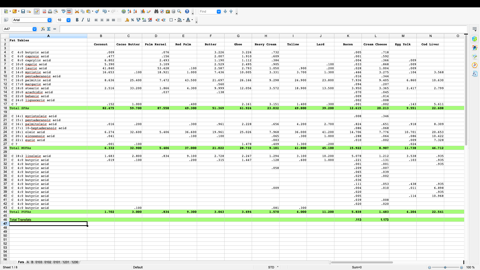Saturated and monounsaturated fats are generally much healthier than polyunsaturates. There are two types of polyunsaturates that are essential to the human diet, the ω-3 and ω-6 fatty acids, but we only need a small quantity of them. Furthermore, since the two types of essential fatty acids compete for the same receptors, we should try to eat them in more-or-less equal amounts. Most ω-6 fatty acids cause inflammation when eaten in quantity, and on a standard American diet (SAD), the challenge is not to get enough ω-6 fatty acids, but rather to avoid getting too much. Therefore, the best strategy for balancing ω-3 and ω-6 intake is not to try to increase our ω-3 intake, but rather to reduce ω-6 intake to a more reasonable level.
Industrial seed oils (which is what the industry calls them, even though they call them “vegetable oils” when talking to consumers) contain excessive amounts of ω-6 fatty acids, which is why we advise avoiding them. Polyunsaturated fats are also unstable, and they react poorly to being heated: they oxidise and form compounds not otherwise found in nature, and no one knows what happens to the human body that incorporates them into cell walls. But more and more researchers are beginning to suspect that the results are not good. Given that seed oils and inexpensive refined sugar entered the consumer market around the same time, it is difficult to tease out the specific effects of each, but it is probably not coincidence that the chronic diseases that plague us today were virtually unknown until these two products entered the food supply.
The upshot of all this is that, despite the nutritional advice of the past forty years, the best fats are the ones our grandparents and great-grandparents cooked with: bacon grease, butter, lard, and tallow. If you must use oils, stick to the fruit oils, such as avocado, coconut, and olive, because their fatty-acid profiles are much lower in polyunsaturates.


